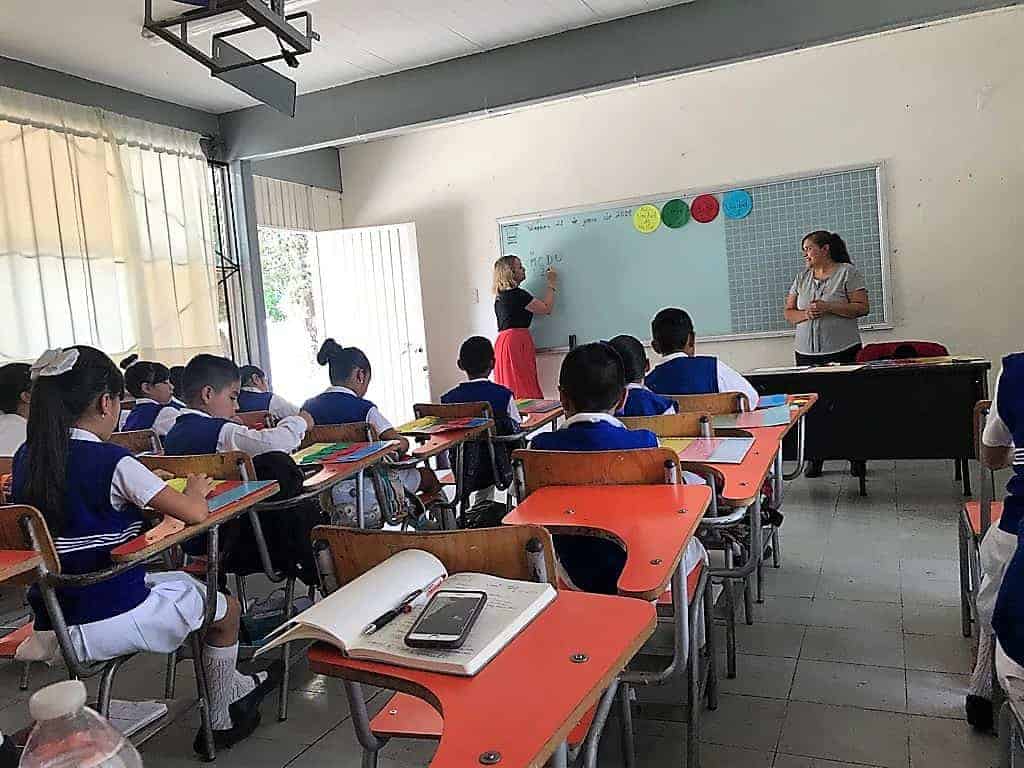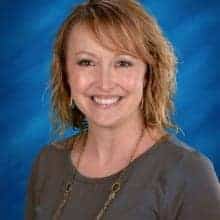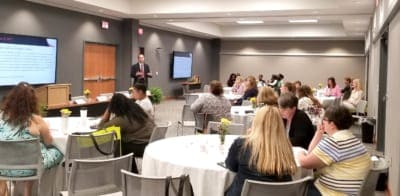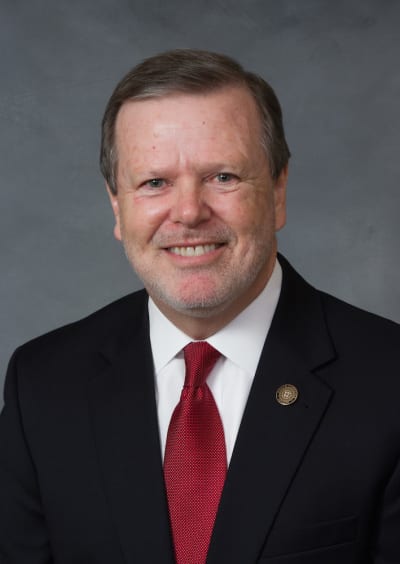Some of the most profound moments in my life — those epiphany moments — can be traced back to an interaction or a relationship with a teacher. In elementary school, I was a sponge for every lesson, eager to get to the next chapter in every book, desperate to figure out why the science experiment had failed. As a third grader during the Gulf War, I remember anxiously awaiting responses from letters my class had written to both the President and a soldier, one of whom we learned had a great responsibility and the other a great sacrifice.
That was the year I began dreaming of being a teacher.
When I was in fourth grade, I met my first major roadblock in education: long division. Sadly, this was paired with a teacher who was rough around the edges: strict in an unloving way, standoffish, and unwilling to work with those of us struggling through the many steps of the algorithm. This particular year brought about a major transition for me as I made the firm decision that I hated math.
The lasting effects of this experience followed me into college and into my first mathematics methods class as an undergraduate. I was terrified of teaching math.
Fast-forward 25 years from that fateful fourth grade experience, and you will find a confident and passionate teacher with math as a specialty. I have a unique patience for struggling math students as I see so much of myself in each of them. I am unwilling to teach them a procedure without deep understanding behind it.
I want them to know the why even more than the how.
I have the power to make math matter and the enthusiasm, energy, and creativity to make it relevant and engaging.
After the orientation for the Go Global NC program to central Mexico, I had grand plans for researching and preparing for my time here in Mexico. Around the same time, I applied for and was interviewing for a new position as Instructional Math Coach at my school. My focus shifted towards researching and preparing for this new endeavor, and my passion for a deep level of conceptual understanding grew. The more I read, the more I realized that I had truly received the short end of the stick when it came to mathematics understanding. If only I had had the opportunity to encounter a teacher who cared enough to teach me why the numbers worked the way they did; to help me to unravel the pattern that is mathematics. One week before departure for Mexico City with Go Global NC, I received word that I had been selected for the position and would serve my thirteenth year of public education as a mathematics instructional coach.
The word ignorance carries a negative connotation in the world today, and it can often bring about feelings of angst or anger; however, in its most literal sense, ignorance simply means a lack of knowledge. My ultimate goal for traveling to Mexico was to immerse myself into situations that may unravel any misconceptions I may have had — to undo any unintentional ignorance. I cannot think of another time in our history that it would be more important to gain knowledge, mindfulness, and empathy towards our vastly diverse and closest neighboring country.
I am not exactly sure how to articulate my preconceived thoughts about the educational system of Mexico, but I feel as though I may have ignorantly lumped all international schools into one big category of direct instruction, drill and practice.
What I experienced in the classroom of Maestra Elisa Hernandez at Escuela Primaria Luis Chavez Orozco could not have been further from this mistaken belief.
Her third graders sat in rows in royal blue uniforms with bright smiles on their faces. As we introduced ourselves (with the help of a translator), I saw many faces light up as I mentioned that I was a teacher of fourth grade mathematics who did not speak Spanish. I took a seat in the back of the classroom and prepared to observe her lesson. She started by writing the following definition on the board, “Identificar el valor posicional de los números, en el proceso de división.”
I quickly looked back to our translator for her explanation and saw her struggling through the academic language. Though her Spanish is excellent, these words are not a part of the vernacular of ordinary people. They are, however, very common words for a primary mathematics teacher. Hesitantly, I predicted that her words indicated that the class would be studying how the position of the number (more commonly known as place value) affected the process of division. As it turns out, I was correct.
Maestra Hernandez instructed everyone to reach under his or her desk and pull out a place value chart that was divided into sections and colors that represented the ones, tens, hundreds, and thousands place. Every child also had a bag of cut out colored circles that matched each column on the chart. The class practiced building numbers by placing the correct amount of chips in each column, and we were instructed to walk around and check for undertanding and unravel misconceptions. I could not contain my excitement to kneel down beside these beautiful, squirmy children.
At first, I was intimidated by this task, as I remember my colors, numbers, and about 25 singular vocabulary words from high school Spanish. What happened next, however, surpassed any hopes that I had coming into this program. As I made my way from student to student, I found that I had no trouble at all communicating about their progress, assisting when needed, or working towards a correct solution.
Together, we were able to communicate about the task at hand because mathematics is a universal language.
Several students remarked at how good my Spanish was. Nothing could be farther from the truth; however, when energetic teaching is paired with energetic learning, a multitude of barriers can be surpassed. As though she could sense my desire to teach these children, she called me to the front of the room and handed me the Expo marker. I could not get there fast enough. Looking out over that sea of bright faces brought forth a confidence that has been built over a decade of love for the profession of teaching.
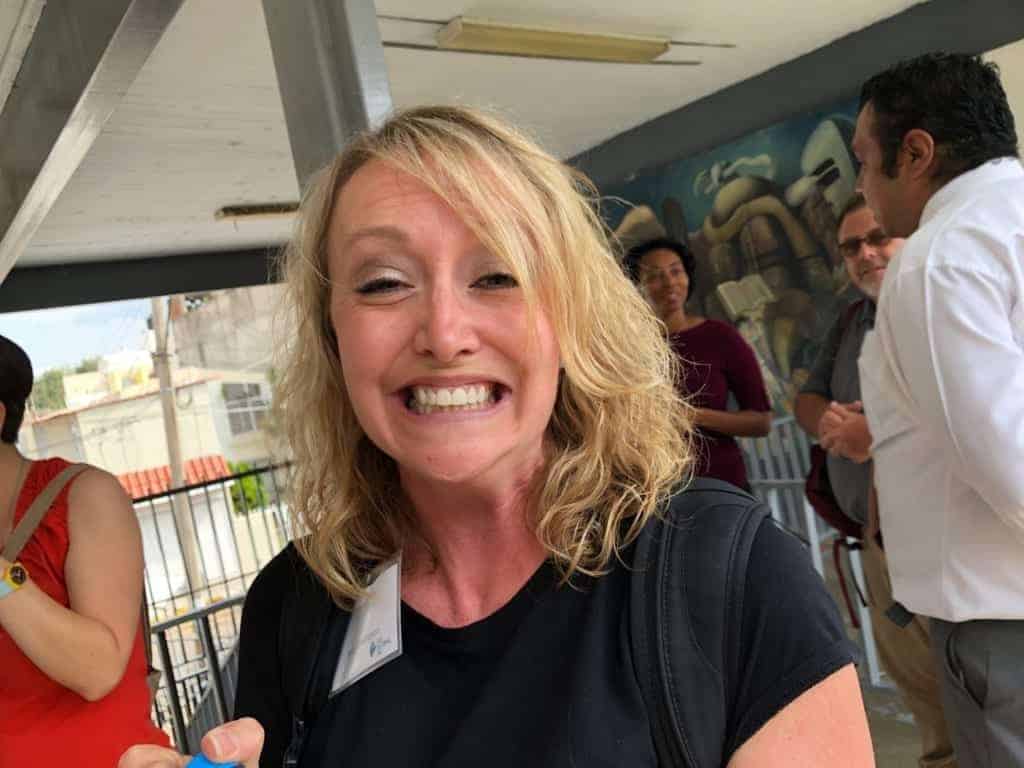

As the lesson shifted towards an application of place value understanding to the operation of division, I watched in awe as we asked the children to trade in their three hundreds chips for 30 tens chips to more easily divide. When those 30 chips could not be broken down evenly, we traded in a ten chip for ten ones chips. I was amazed at the level of conceptual understanding that was taking place, and it shattered every belief I had about education in other parts of the world.
Totally geeking out! I just got to teach math to a precious group of 3rd grade children in Mexico! ??#numbersgeek #eek #inmyelement #mathisuniversal #commonlanguage #GlobalTeachers @EducationNC @GoGlobalNC @RSSMillbridge @RSSinformation @Jrdn_Baker @linglead @lynn_moody
— Abby Covington (@AbbyKCovington) June 21, 2019
Though I had once placed this movement towards conceptual understanding in mathematics into a category of American teaching and learning, I realized today that this is not unique to my geographic or demographic position and that authentic and engaging instruction can happen on all parts of the globe. This can happen with expensive, store bought manipulatives, but it can also happen with construction paper place value charts and cut out circles.
A teacher who cares about her students and what they are experiencing can ensure that learning is occurring even if she does not know every word of the language that is native to the group she is working with. I reaffirmed my belief that deep understanding of content and pedagogy is imperative if you want true learning to occur.
I witnessed first hand that encouragement, high fives, and cheering on are always well received.
I remembered that building a child’s confidence through scaffolding their understanding is an educational practice that is timeless and cannot be replaced with any new age program or gadget. Today, I understood that quality and energetic teaching and learning transcends boundaries and has the power to be transformative in the lives of students and teachers alike.
This experience was not my first encounter with Go Global NC. Last year, I was supposed to travel to China with a group of educators as a part of being awarded Rowan Salisbury School System’s Teacher of the Year 2017-2018. I was devastated to forfeit the program to China due to my mother’s quick decline with lung cancer that was unresponsive to treatment. I spent the better part of the year feeling bitter about the missed opportunity to travel to an exotic place. During the past 10 days, however, I have learned the exact reason that I did not go to China, and it has very little to do with my beloved mother.
I did not go to China because I was meant to come to Mexico.
